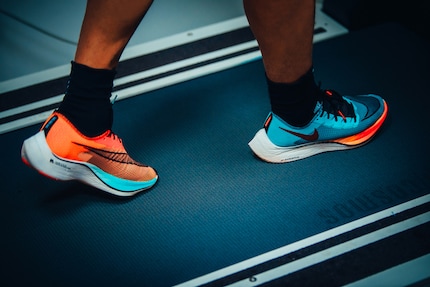
Siemens EQ700 integral TQ717D03

Vaporfly: What sounds like a superhero from Marvel is a running shoe from Nike. And it has recently caused quite a stir on the scene. Now there are new rules because of this marvellous shoe. The most important points.
World Athletics saw the level playing field at risk and reacted. The three most important rule changes that have been in force since 30 April:
From radio journalist to product tester and storyteller, jogger to gravel bike novice and fitness enthusiast with barbells and dumbbells. I'm excited to see where the journey'll take me next.
From the latest iPhone to the return of 80s fashion. The editorial team will help you make sense of it all.
Show allAt the end of January, the World Athletics Federation announced a rule change for competition shoes. This was in response to the controversy surrounding Nike's latest running shoe development. An internal World Athletics working group concluded "that there is independent research indicating that the new technology used in the soles of road running shoes offers a performance advantage."

It is obvious that World Athletics is reacting to the hype surrounding the Nike models "Vaporfly4%" and "Vaporfly Next%" and their influence on running times in marathon competitions. However, the new rules hardly change anything in this respect. With the exception of the prototype with which Eliud Kipchoge broke the 2-hour barrier for the first time at the Ineos 1:59 Challenge in Vienna in 2019, all previous Vaporfly models are still permitted under the new rules. World Athletics is thus aiming for future developments. In Vienna, Kipchoge ran in a shoe with a sole thickness of around 50 millimetres and several carbon plates. With the new regulation, both are no longer permitted.
World Athletics' timing in announcing the rule change in January caused a frown. Just a few days later, Nike launched a new model, the "Nike Air Zoom Alphafly Next%". Coincidentally, the shoe with a sole thickness of 39.5 millimetres and only one integrated plate complies with the new rules and would therefore have been allowed to be used at the Olympic Games in Tokyo. The visionary view of the US shoe manufacturer into the crystal ball of the future of running shoes is remarkable. A rogue who thinks evil of it. At least Adidas, New Balance and co. can now follow suit when developing new models. <p

Siemens EQ700 integral TQ717D03